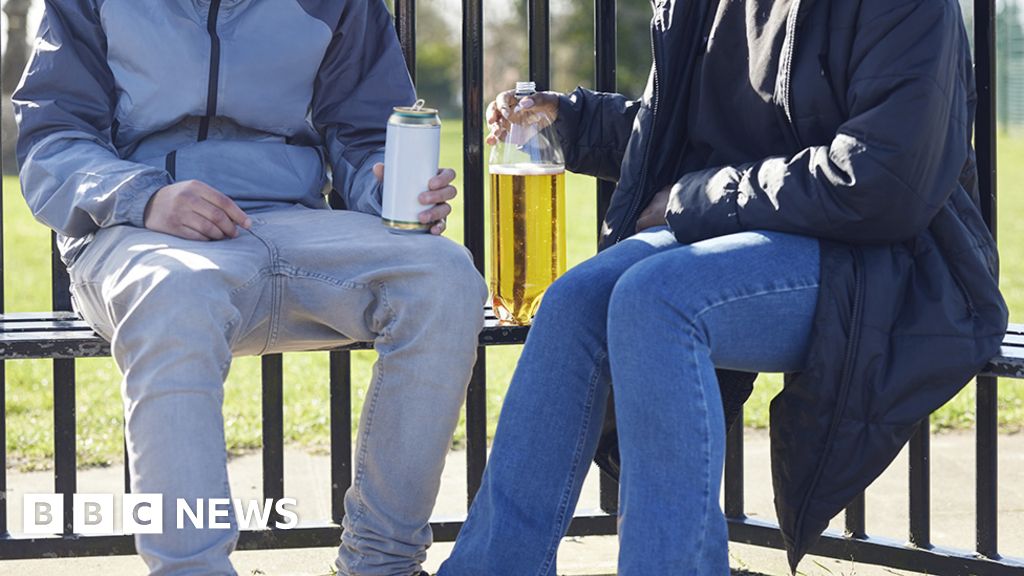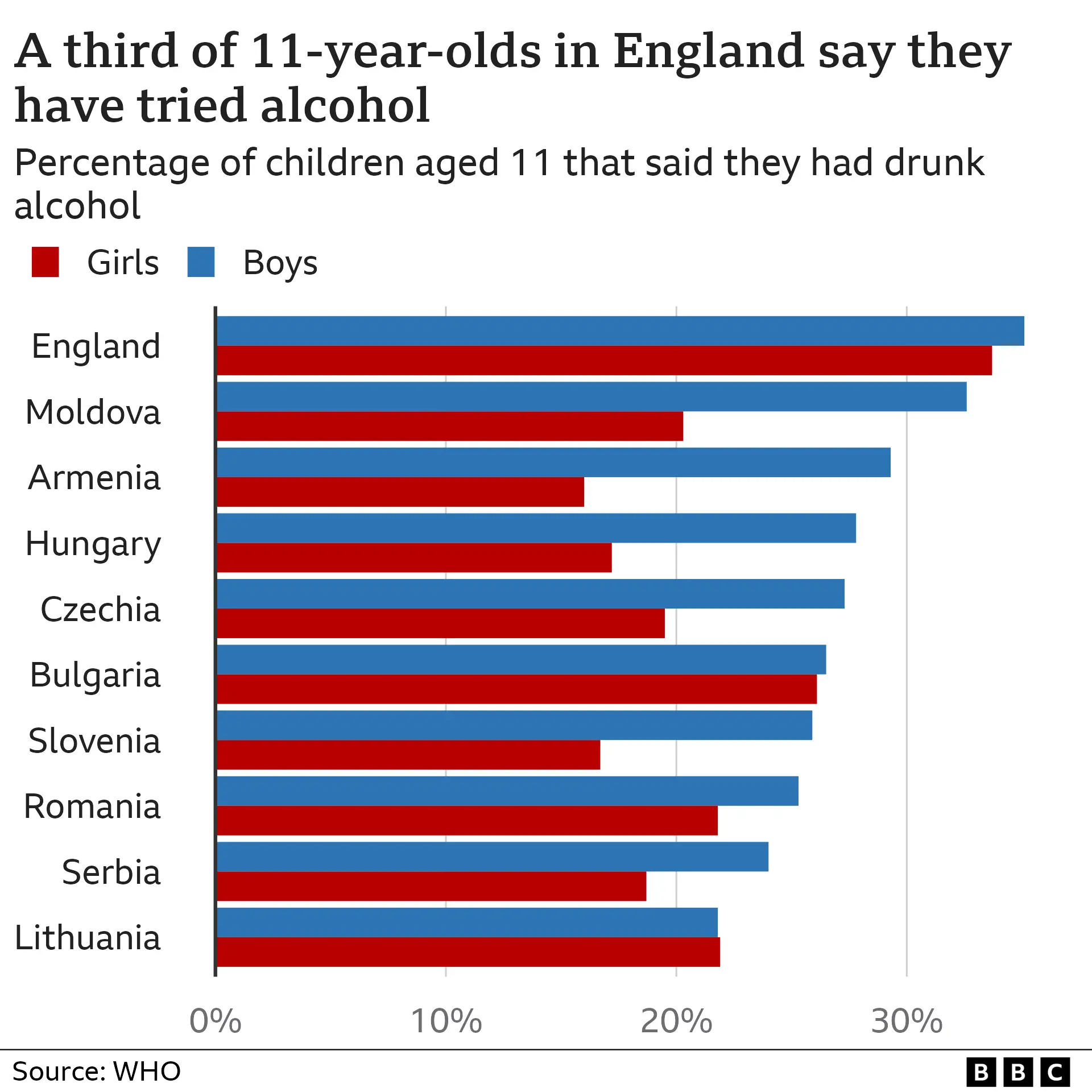World
England child alcohol use tops global chart, finds WHO report

By Philippa Roxby and Elena Bailey,Health reporters
 Getty Images
Getty ImagesA third of 11-year-olds and more than half of 13-year-olds in England have drunk alcohol – putting it top out of 44 countries examined in a report by global health experts.
Girls were found to be more likely than boys to be drinking and getting drunk aged 15 in England, Wales and Scotland.
The World Health Organization (WHO) report said alcohol, which can damage children’s brains, has been normalised.
It called on countries to introduce more measures to protect children.
The report looked at data from about 4,500 school-age children from each country in Europe, central Asia and Canada in 2021-22 on cigarette smoking, vaping, alcohol and cannabis habits among adolescents.
The UK has always had relatively high alcohol use among young people but it has been declining for some time.
Study coordinator Dr Jo Inchley, from Glasgow University, said signs that more children were starting to drink at a young age was “concerning”.
“Trying substances is part of growing up and experimenting but alcohol has long-term effects on health,” she said.
Dr Inchley said being exposed to more alcohol at home, changing attitudes of parents and the rebound effects after Covid lockdown could all be factors in the trend.
Research shows the earlier children start drinking, the more serious a problem it can become when they are older.
At age 13, the report found 12% of girls and 9% of boys in England had been drunk at least twice in their lives.
At 15, that had risen to a third of girls and a quarter of boys. More than a half of girls said they had drunk alcohol in the past 30 days.
‘I wanted to drink vodka at school’
 Harriet Strange
Harriet StrangeHarriet Strange, 30, from Kent started drinking alcohol when she was 14.
“My dad was an alcoholic so I think there’s a chance that I may have done it because it was learned behaviour from him,” she said.
“Once I started drinking it was a spiral of self-destruction.
“My friends were always older than me so I would get them to buy alcohol for me or I would take it from my house.”
Harriet would go to house parties when she was 14 or 15 and “nobody would bat an eyelid, it was just normal”.
She said she knew from an early age that her relationship with alcohol wasn’t like other people’s.
“It got to the point where I wanted to drink vodka at school,” she said.
“My father’s death when I was 16 was really the catalyst of absolute self-destruct.”
She has been sober for three-and-a-half years now and credits becoming pregnant with her daughter for saving her life.
“I know what it’s like being a child of an alcoholic and I didn’t want to give that to her.”
Harriet is now a recovery coach and volunteer for Nacoa, an organisation which provides support for those affected by a parent’s drinking.

Helena Conibear, from Talk About Trust, which educates children in schools about alcohol and other substances, said most children have their first drink in the family home.
“If teens think parents don’t mind, they will drink outside the home,” she said.
Official health advice is that children and young people should not drink alcohol before the age of 18 and, if they do, not until at least 15. This is to protect their brains and their bodies, which are too young to cope with it.
Vaping rates rising
The report also looked at other substances used by adolescents.
On cannabis use, the report found more boys in Scotland had used the drug (23%) compared to all other countries surveyed.
Cannabis use has dropped and stabilised in recent years but some vulnerable children are still continuing to use it, said Dr Inchley.
No data on cannabis was provided for England.
Smoking among children is much less common than it used to be – one in five 15-year-old girls said they had ever smoked a cigarette – but smoking rates are still higher among girls than boys in England and Wales.
The report confirmed that vaping rates have overtaken cigarette smoking in most countries, with nearly one in 10 11-year-olds saying they’ve used a vape at least once, rising to 26% of boys and 40% of girls by age 15.
Vaping rates in the UK are above average, compared to other countries. Even though vaping is thought to be much less dangerous than smoking, the risks of children breathing chemicals into their lungs are not yet fully understood.
The UK government has already introduced measures to clamp down on the promotion and illegal sale of vapes to under 18s.
Dr Hans Kluge, WHO regional director for Europe, said harmful substance use among children in many countries was “widespread” and “a serious public health threat”.
He said children were constantly exposed to harmful products online and that video games were helping to make drinking, smoking and vaping seem acceptable and normal.
The report urged countries to introduce measures to protect younger generations, such as limiting the availability of nicotine and tobacco products, alcohol and a ban on advertising and promotion of any substances on mainstream and social media.











